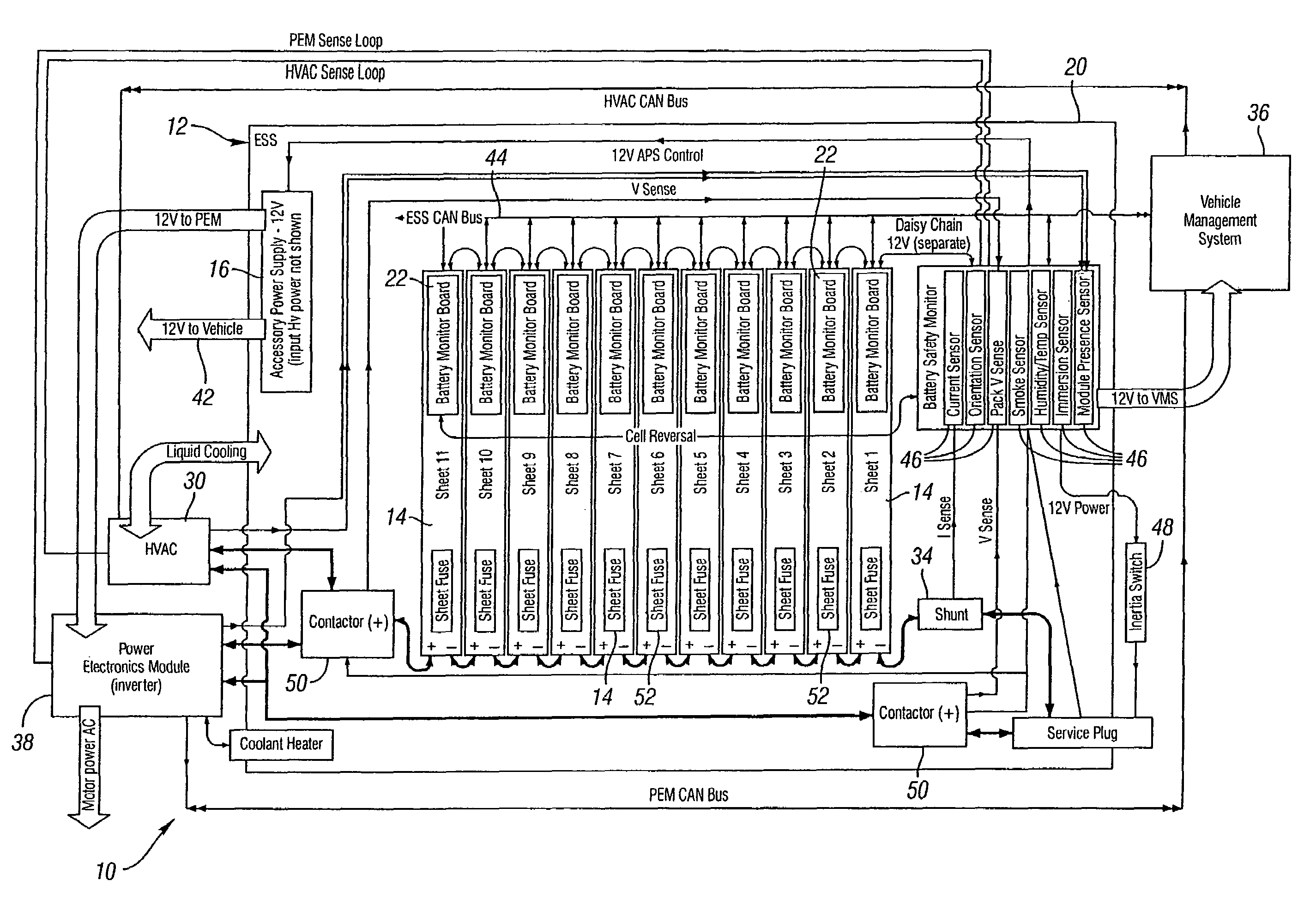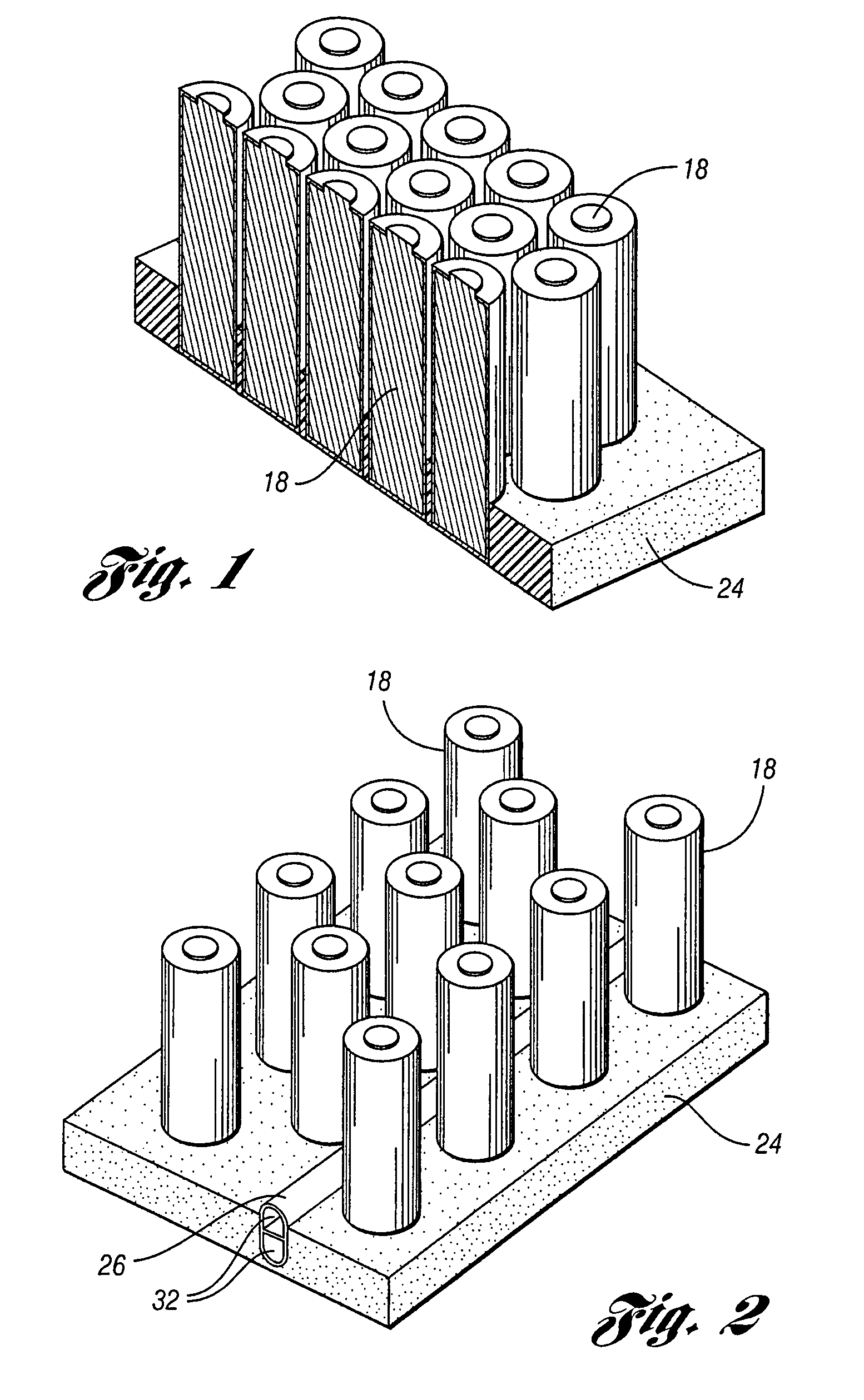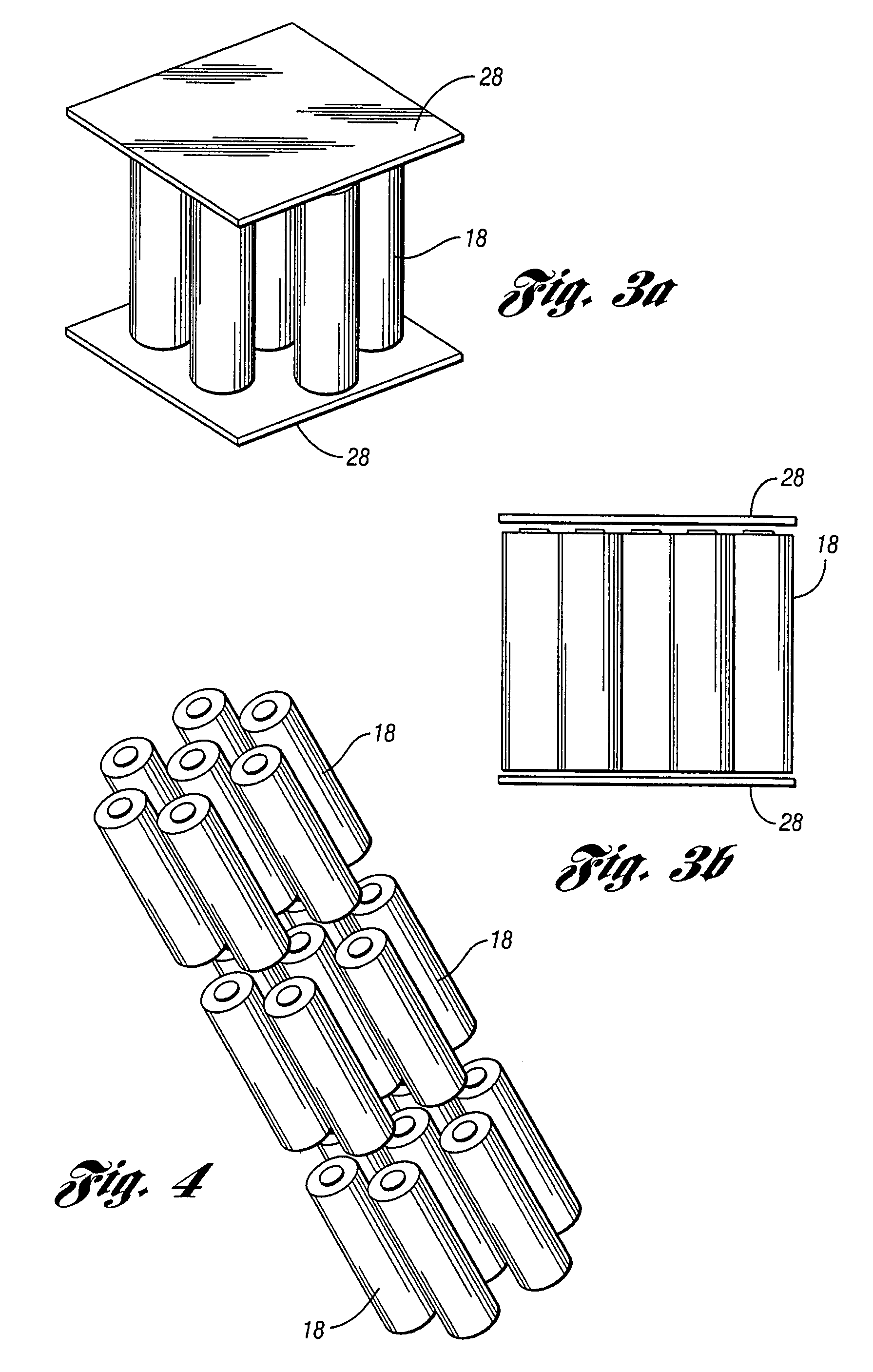Mitigation of propagation of thermal runaway in a multi-cell battery pack
a multi-cell battery pack and thermal runaway technology, which is applied in the direction of several simultaneous battery arrangement, safety/protection circuit, electric devices, etc., can solve the problems the durability and overall life of batteries or cells, and the inability to achieve the acceleration, handling, performance, etc., to achieve the effect of reducing the range of electrical vehicles, reducing the cost of battery or cell replacement, and reducing the cost of replacemen
- Summary
- Abstract
- Description
- Claims
- Application Information
AI Technical Summary
Benefits of technology
Problems solved by technology
Method used
Image
Examples
Embodiment Construction
)
[0031]Referring to the drawings, a system 10 for mitigation of propagation of a thermal runaway event in a multi-cell battery pack for use in an energy storage system (ESS) 12 is shown. The energy storage system or battery pack 12 is generally comprised of a predetermined number of battery modules or sheets 14, a main control and logic PSB and a twelve volt power supply 16. In one contemplated embodiment the energy storage system 12 will have eleven battery modules or sheets 14 which are capable of producing approximately 375 volts DC. This nominal voltage will operate an electric vehicle that may be capable of traveling many miles without recharging and is capable of delivering enough power and acceleration for everyday driving use. In one contemplated embodiment the ESS 12 may be capable of storing enough energy that the electric vehicle may travel approximately 200 miles or more without recharging. However, it should be noted that it is also contemplated that the electric vehicl...
PUM
 Login to View More
Login to View More Abstract
Description
Claims
Application Information
 Login to View More
Login to View More - R&D
- Intellectual Property
- Life Sciences
- Materials
- Tech Scout
- Unparalleled Data Quality
- Higher Quality Content
- 60% Fewer Hallucinations
Browse by: Latest US Patents, China's latest patents, Technical Efficacy Thesaurus, Application Domain, Technology Topic, Popular Technical Reports.
© 2025 PatSnap. All rights reserved.Legal|Privacy policy|Modern Slavery Act Transparency Statement|Sitemap|About US| Contact US: help@patsnap.com



